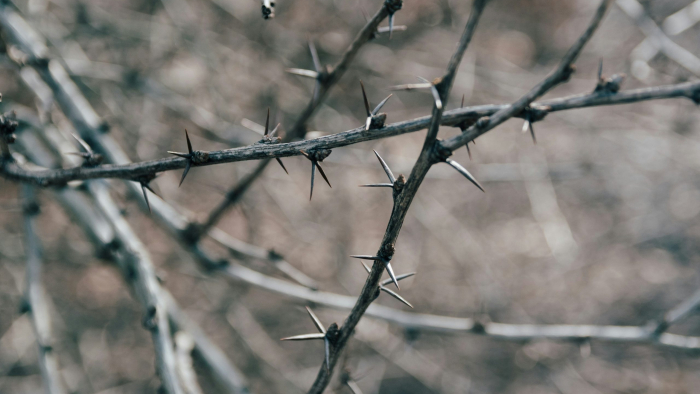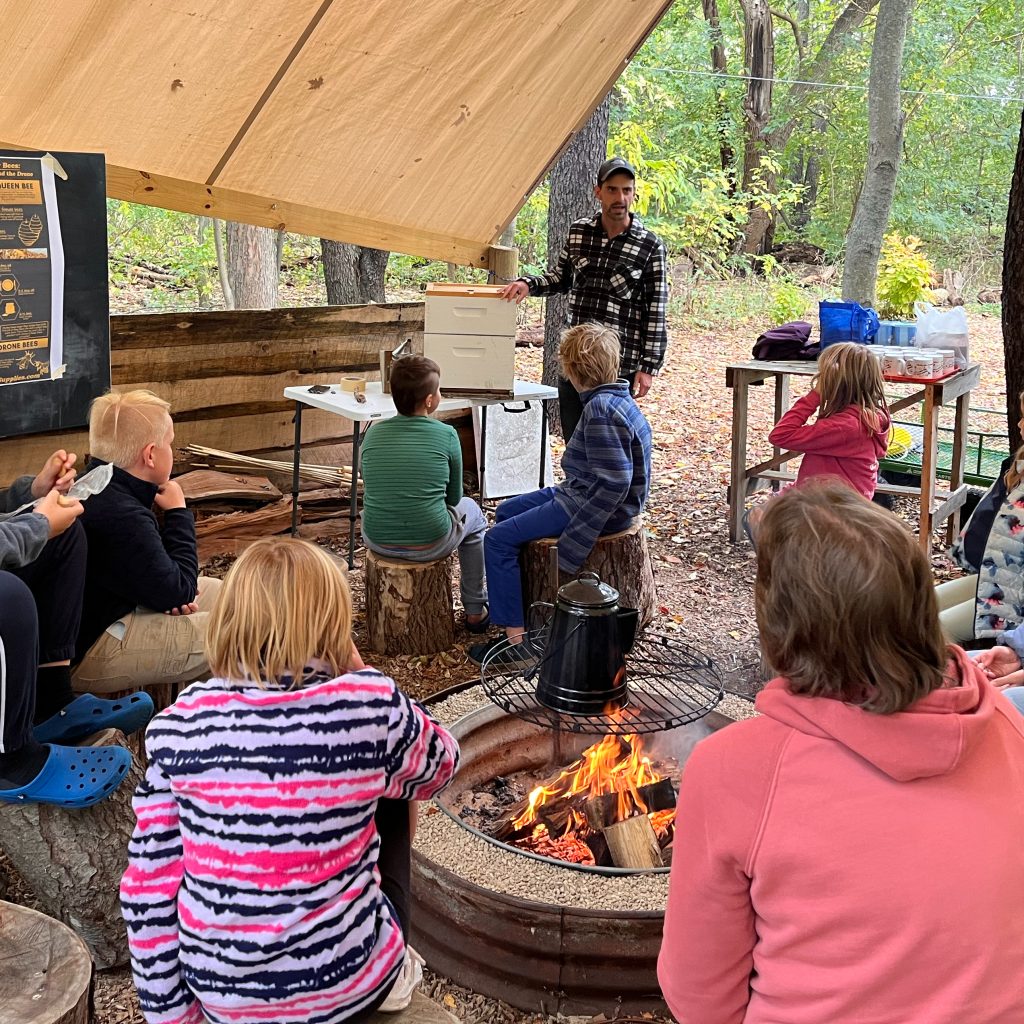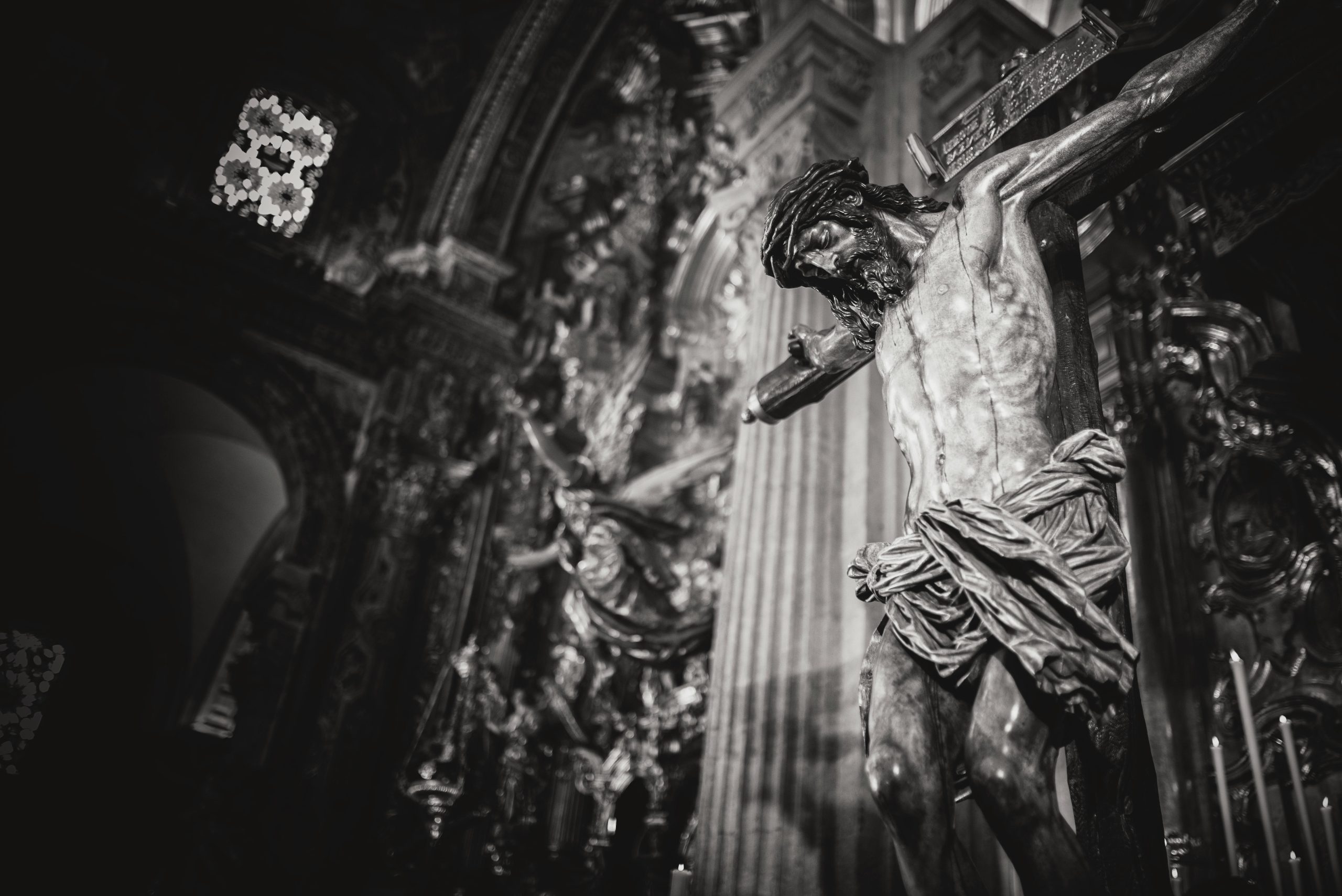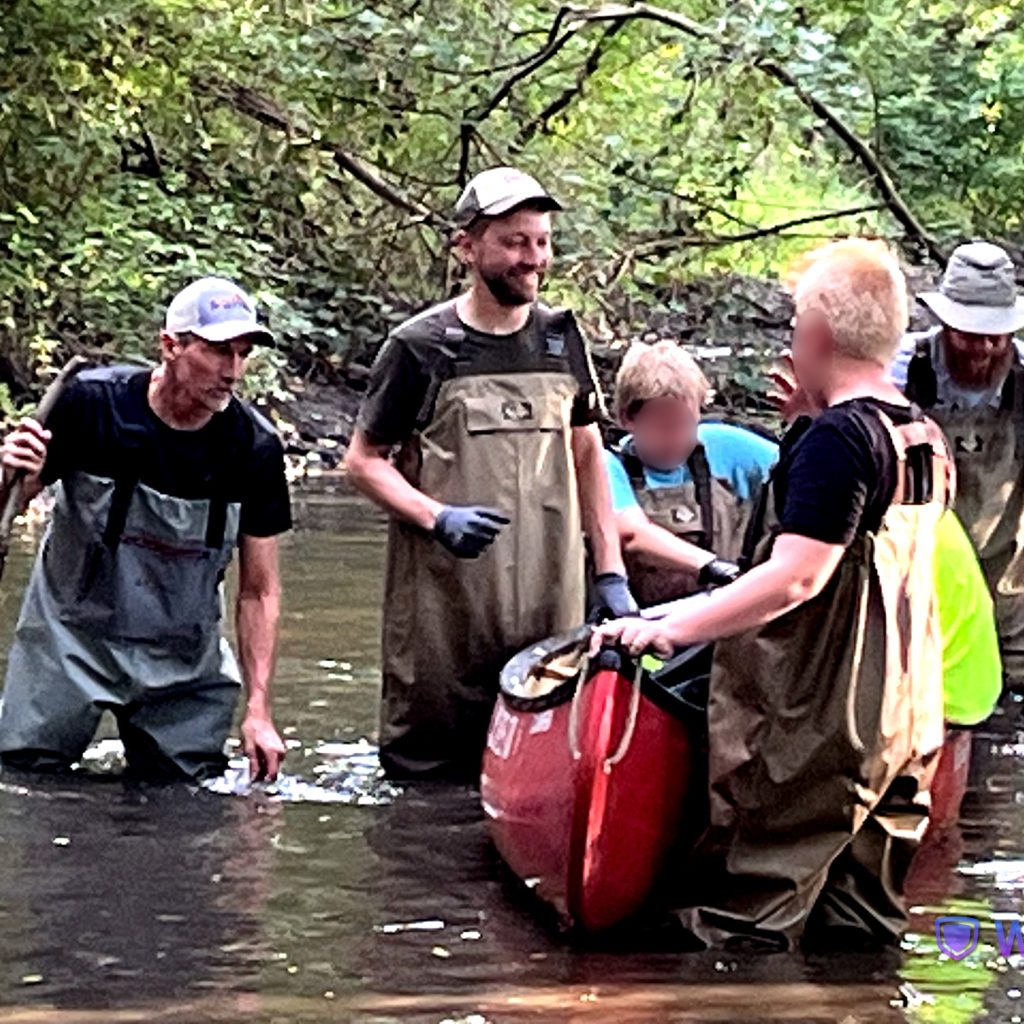Cover image by Kelly Sikkema, on Unsplash.
by Gerry Koning
When one asks for examples of Jesus’ power shown in nature, it is easy to point to his calming the storm on the Sea of Galilee, healing the leper, or even raising Lazarus from the dead. Often, we see these events as signs that Jesus was the Messiah promised in the Old Testament. Now, these signs are important and do demonstrate Jesus’ power over creation, but they do not necessarily model how we, his followers, should care for creation.
Yet lately, I have come across a very powerful thing that Jesus did, which – to me – demonstrates a deep commitment to caring for creation. I have been working on a discipleship lesson for our outdoor classes that focuses on thorns – yes, that’s right, thorns. I wanted to teach about thistles, rose bushes, hawthorns and brambles.
The outdoor classroom at “The Refuge” church.
So, my lesson starts by talking about the thorns mentioned in Genesis and how, as a result of the fall, our care for creation has not been terminated but made more difficult. Thorns are a sign of the curse that came upon the earth after the fall. Though they actually provide protection for plants against animals that want to eat them, they are still a helpful symbol of the results of fallen humanity and the curse that has fallen on the earth.
Throughout the Old Testament, the image of thorns expresses the plight of an afflicted landscape, and the prophet Isaiah often references it. For example, Isaiah 32:12-13 says, “Beat your breasts for the pleasant fields, for the fruitful vines and for the land of my people, a land overgrown with thorns and briers.” Time and again, the prophets talk about desolate places bearing the curse of briers and thorns.
When we turn to the crucifixion story, we once again read about thorns. This time, however, it is a crown of thorns placed – rather cruelly, I assume – on the head of Jesus. Jesus wore the crown of thorns all the way to the cross, and, in fact, it was probably all he wore as he hung on the cross.
Crucifix, by Alem Sánchez, on Pexels.
The first man, Adam, was naked until he fell into sin, and then God clothed him. But the results of his sin meant that he would, from that time forward, have to deal with thorns as he cared for the earth (Genesis 3:17-18; cf. Gen. 2:15). At his death, the second Adam, Christ, was unclothed except for the crown of thorns he wore to the cross. These thorns seem to signify that, along with humanity’s sins, Jesus also bore the curse of creation. To put it in the words of the Apostle Paul, Christ empathizes with the “groaning” of the “whole creation” (Romans 8:22), and through “the blood of his cross,” he “reconcile[s] to himself all things, whether on earth or in heaven” (Colossians 1:19-20).
This is a powerful statement of God’s care for all he created, and how humanity’s redemption is intimately tied to that of creation. In addition to human sin, Jesus carried the curse of creation to the cross, so that – like the hope we have for the forgiveness of our sins – we have the hope of a restored creation.
Of course, Christ did not eliminate sin on the cross; we still deal with it all the time. Nor did Christ immediately restore creation to its pre-fall state; we still see the need for complete restoration. However, as with our sin, we have hope that Christ has broken the curse and that our work at creation care can be just as effective as our work at overcoming sin in our lives. So it is with great enthusiasm we can sing the words of our favorite Christmas carol: “No more let sins and sorrows grow, nor thorns infest the ground; he comes to make his blessings flow far as the curse is found.”
A stream cleanup with volunteers from The Refuge.
For me, this is a huge encouragement to continue to care for creation, even in the face of critical neglect by far too many people and industries. It is also a clear call for Christians to get serious about caring for the environment, because Jesus did the heavy lifting for us in taking the curse right up to the cross and dying for the salvation of his children and all creation. If we as Christians do not see what Christ did for creation on the cross, then we indeed have been deceived. Having a clear vision of what that crown of thorns meant when Jesus wore it on the cross, we, of all people, should optimistically care for this beautiful place for which he died.
Gerry Koning is the pastor of The Refuge, a church in Grandville, Michigan, that has leaned heavily into the care of creation, encouraging all believers to take up Christ’s call to be caretakers of our wonderful world. His congregation is also part of the 2024/25 Virtual Cohort of A Rocha USA’s “Churches of Restoration” program. Feel free to contact Gerry at “[email protected].”












Add a Comment